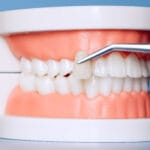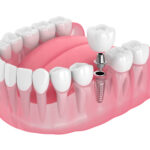
If you need gum surgery, chances are pretty good that it will be detected at a regular check up by your dentist. If, after a thorough dental examination, it is determined by your dentist that you need gum surgery, you will likely be referred to a periodontist who specializes in the treatment of gum diseases and the various gum surgeries that are performed.
There are a number of reasons that someone may need gum surgery. A few of the most common types of gum surgery are:
- Gingivectomy or Gingivoplasty: This is the removal of gum tissue by your periodontist to reshape healthy tissue left around teeth.
- Soft tissue graft: This surgery is used to improve gums that have receded.
- Crown lengthening: This surgery involves the removal of gum tissue, bone, or both to expose more of a tooth.
- Gingival Flap Surgery: This surgery is likely the most common and is used to treat gum disease.
Gum Surgery Preparation
Before your surgery, your periodontist will discuss any medications or health conditions that may affect your procedure or dental health. Many medications can affect your mouth that you might not even realize, so be sure to inform your periodontist of all medications you are taking.
The periodontist will clean your teeth and use a local anesthetic to numb the gum area(s). The overall time the procedure takes depends on severity and type. You’ll know in advance the amount of time you should plan for the procedure.
In the common gingival flap surgery, the surgeon will fold back the gum flap to access the infected tissue below the gums. Infected tissue will then be removed and the periodontist will then proceed with tooth scaling and root planning to remove any plaque and bacteria that remains below the gum line. While all the surgeries vary from procedure-to-procedure, the healing process is quite similar for each.
Post-gum Surgery Care
After your surgery, you will either have dissolvable stitches or removable stitches. If your dentist does not use the dissolvable stitches, your stitches will be removed at a follow up appointment 7 – 10 days after your surgery.
Your periodontist will also explain any limitations on physical activities and diet. It may be necessary to be on a “soft” diet (JELLO, broth, applesauce, etc.) for a period of time after the surgery. There is a risk of swelling and bleeding, and any excessive bleeding, (heavy and for 20 minutes or longer) should be brought to the periodontist’s attention right away.
Most people experience only mild to moderate pain that can be treated with over-the-counter pain relievers such a Tylenol, and swelling can be reduced through the use of icepacks. You may be prescribed antibiotics to help fight or ward off infection.
Tips for Avoiding Gum Surgery
While some gum surgeries are unavoidable, such as the soft tissue graft, where gums recede over time, others are preventable. You should maintain appointments with your dentist once every six months, and be sure to follow a healthy dental care routine. Your routine should include flossing daily, brushing with a fluoride tooth paste twice per day, replacing your tooth brush or brush head every three months and using a mouth wash. These steps can help your mouth stay healthy and avoid the need for surgery.
If you have a concern about your gums, get it looked at sooner rather than later. If caught early, some gum issues can be reversed without the need for surgery. As always, call our office if you need advice.








